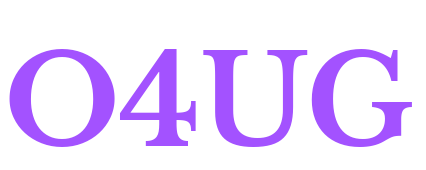A central bank is an independent national authority that conducts monetary policy, regulates banks, and provides financial services to the government and commercial banks. Central banks play a crucial role in managing a country’s currency, money supply, and interest rates to achieve economic stability and growth.
Career Opportunities at the Central Bank
Working at the Central Bank can offer a diverse range of career opportunities across various departments and functions. Here are some common career paths and opportunities available at the Central Bank:
1. Economic Research and Analysis: Central Banks employ economists to conduct research, analyze economic data, and provide insights into economic trends. Economists at the Central Bank play a key role in formulating monetary policy decisions based on their analysis of economic indicators.
2. Financial Stability and Regulation: Central Banks are responsible for maintaining financial stability and regulating financial institutions. Careers in this area involve monitoring systemic risks, developing regulatory frameworks, and supervising banks to ensure compliance with regulations.
3. Banking Operations: Central Banks manage the country’s currency supply, issue banknotes, and oversee payment systems. Careers in banking operations include roles in cash management, currency distribution, and payment system oversight.
MORE JOBS
4. Risk Management: Central Banks assess and manage various risks, including market risk, credit risk, and operational risk. Risk management professionals at the Central Bank work to identify potential risks to the financial system and implement strategies to mitigate them.
5. Information Technology: With the increasing digitization of financial services, Central Banks rely on technology to support their operations. IT professionals play a critical role in developing and maintaining systems for payment processing, data analytics, cybersecurity, and other technological functions.
6. Legal and Compliance: Central Banks have legal departments that handle regulatory compliance, legal issues, and policy development. Legal professionals at the Central Bank work on drafting regulations, conducting legal research, and ensuring that the institution operates within the legal framework.
7. Public Relations and Communications: Central Banks communicate with the public, financial markets, and other stakeholders to explain monetary policy decisions and promote transparency. Careers in public relations and communications involve crafting messages, managing media relations, and engaging with external audiences.
8. Human Resources and Administration: Like any organization, Central Banks require HR professionals to manage recruitment, training, employee relations, and administrative functions. HR roles at the Central Bank focus on attracting talent, developing employees’ skills, and ensuring a positive work environment.
Finding open jobs at the Central Bank
To find open jobs at the Central Bank, also known as the central bank of a country, individuals can typically visit the official career website of the specific central bank they are interested in.
Application process
To apply for a job at a Central Bank, individuals typically need to follow a structured application process. While specific requirements and procedures may vary depending on the Central Bank and the position being applied for, there are some common steps involved in the application process for jobs at Central Banks:
1. Research and Identify Job Opportunities: Before applying for a job at a Central Bank, it is essential to research and identify suitable job opportunities that match your qualifications, skills, and interests. Central Bank often posts job openings on their official websites.
2. Prepare Application Materials: Once you have identified a job opportunity that interests you, the next step is to prepare your application materials. This typically includes updating your resume or curriculum vitae (CV) to highlight relevant experience, education, and skills. You may also need to write a cover letter explaining why you are interested in the position and how your qualifications make you a suitable candidate.
3. Submitting Your Application: Central Banks usually have online application systems where candidates can submit their application materials. It is important to carefully follow the instructions provided and ensure that all required documents are included in your application.
4. Screening and Evaluation: After the application deadline has passed, Central Banks will screen applications to identify candidates who meet the minimum qualifications for the position. Qualified candidates may then be invited to participate in further assessments, such as interviews or written tests.
5. Interviews and Assessments: Candidates who pass the initial screening may be invited to participate in interviews or assessments to further evaluate their suitability for the position. These assessments may include competency-based interviews, technical tests, or assessment centers.
6. Background Checks and References: As part of the selection process, Central Banks may conduct background checks on shortlisted candidates to verify their qualifications and employment history. Candidates may also be asked to provide references who can attest to their skills and experience.
7. Job Offer: Successful candidates who have passed all stages of the selection process may receive a formal job offer from the Central Bank. The offer will typically include details about the position, salary, benefits, and other terms of employment.
